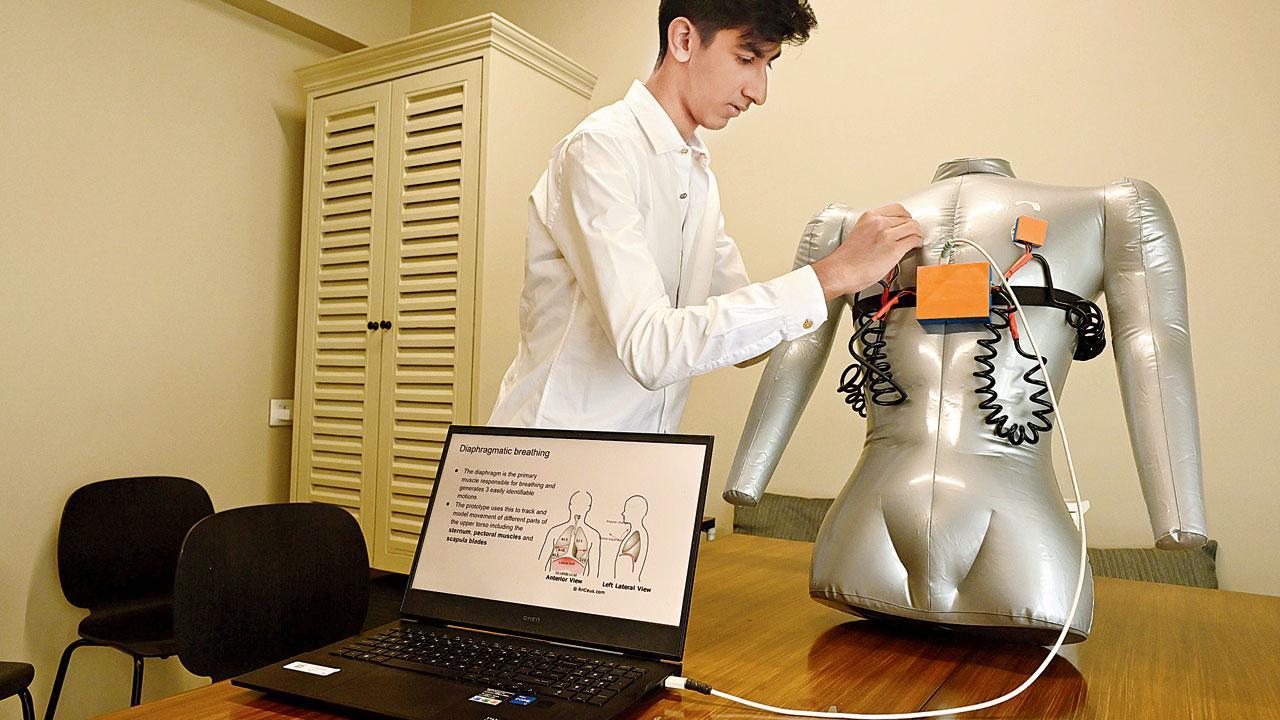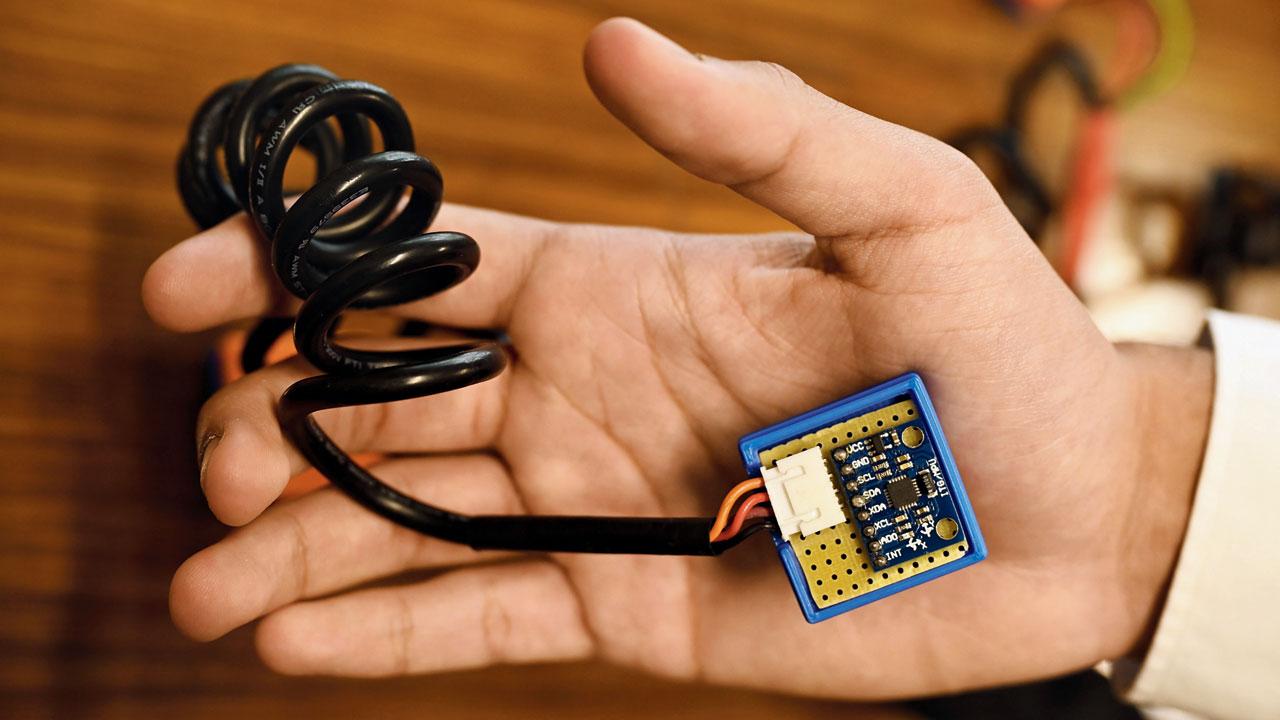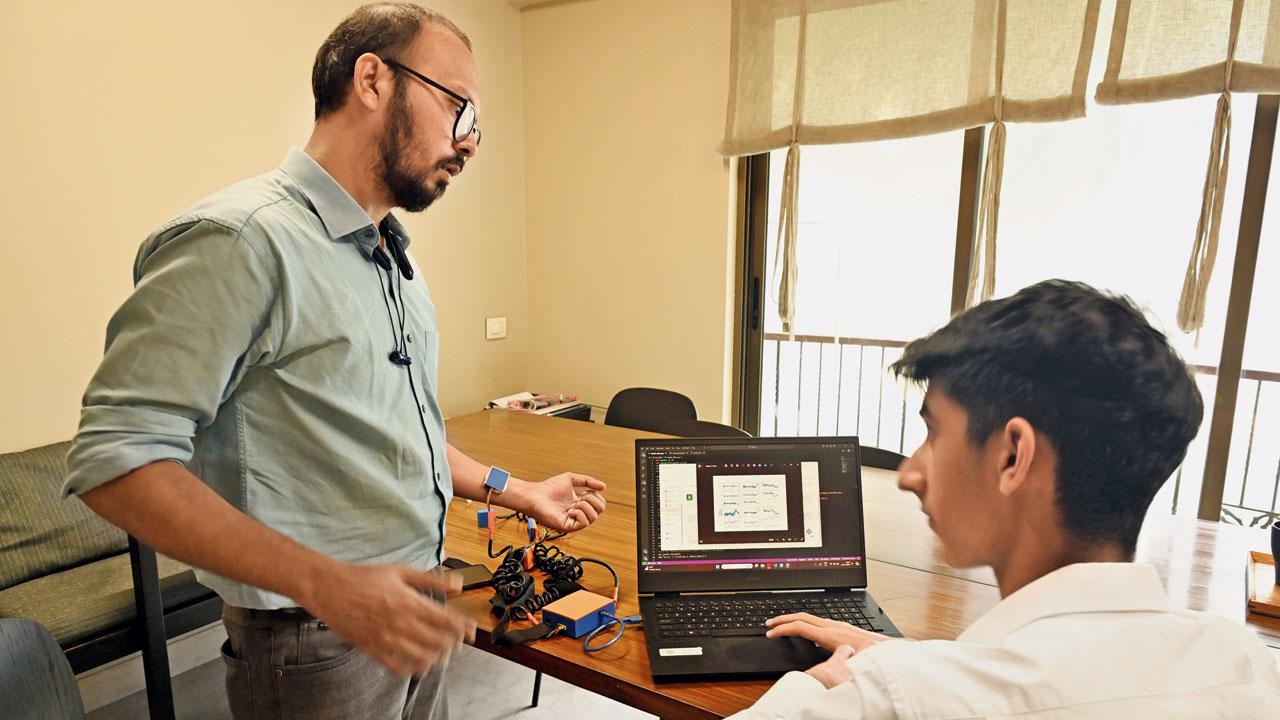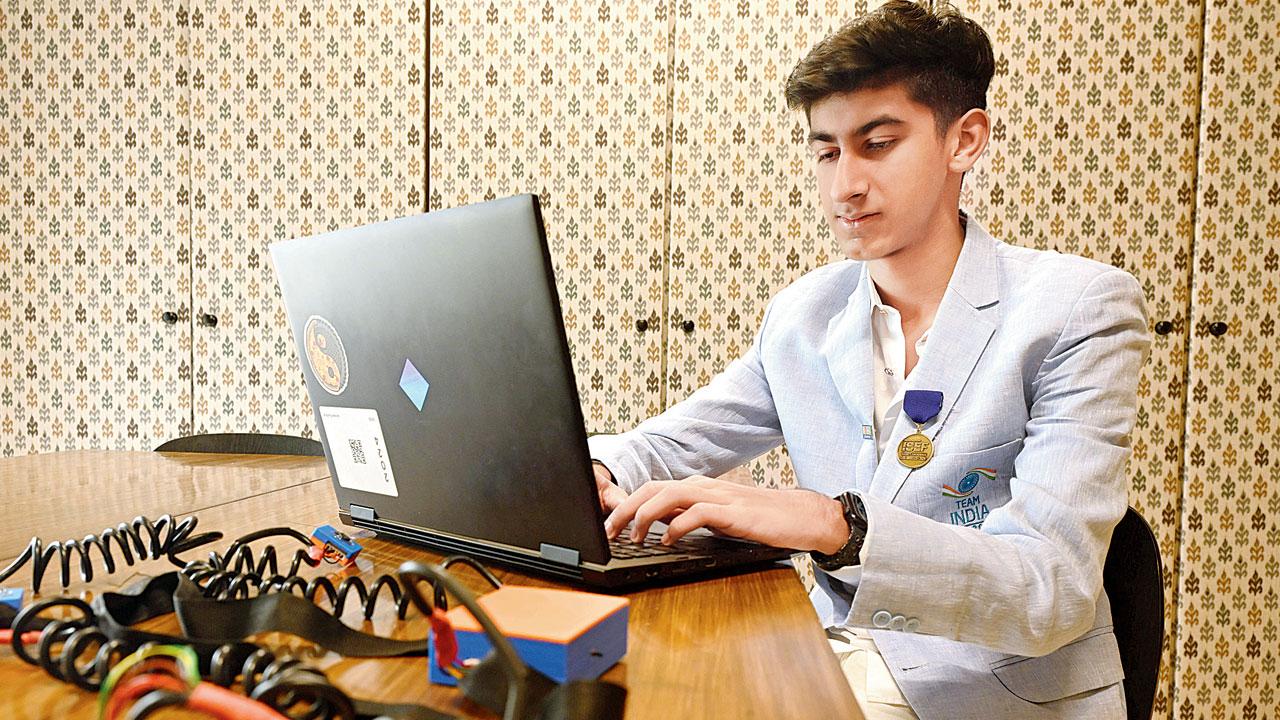A Mumbai teenager’s new-age AI solution navigates a simpler solution to diagnose an incurable genetic condition

Jayveer Kochhar places the sensors on a mannequin
We would have compared the invention to something from Dr House or Grey’s Anatomy, but then this writer was not sure if Jayveer Kochhar, a GenZ representative, would catch the reference. On the morning we visit him at his home in Juhu, the teenager is ready with his laptop to give us a display of his invention, Breathfree Bamboo Spine.
ADVERTISEMENT

A close-up of the internal circuitry of the sensors
The story, as ever so often, begins at home. “My grandmother and uncles have been diagnosed with ankylosing spondylitis. It runs in the family,” the Juhu-based Kochhar tells us. A genetic condition, ankylosing spondylitis causes an inflammation of joints and tendons. “Often, the bones and tendons fuse with each other, even in the vertebrae. Since there is no cure, the only solution is an early diagnosis,” he elaborates. This usually involves a blood test to detect the presence of a specific gene variant, HLA-B27. “The test is expensive, and not available at all labs across India. Plus, I have noticed that people can get afraid of invasive examinations. They tend to ignore signs till it becomes very obvious,” he points out.
Using mathematics in science
A Grade 11 student of the Dhirubhai Ambani International school, Kochhar is a fan of mathematics and has been learning coding since he was four years old. Having learnt about the disease, he decided to use programming and mathematics to tackle the problem. “Even when the disease has not fully progressed, it can be determined by slight changes in breathing patterns. When you have the disease, your chest does not expand as much. You struggle to open up the lungs, or sit straight since the vertebrae or the bones are inflamed or fused,” Kochhar remarks. Armed with this knowledge, and after discussing his ideas with the family orthopaedic doctor, Dr Amit Joshi, the teenager set to work on 3D models in September 2023.

Kochhar (right) tests the sensors on the writer’s hand. Pics/Anurag Ahire
Dr Joshi began the conversation with the teenager late in 2022. “The disease begins with the fusion of the joints. Often, the issue starts out as a typical back pain. It is only when the disease goes out of control that people often are referred to us. By then we have lost precious time. If we have a machine where we can actually see a holistic data of the expansion of our chest, we can pre-empt the possibilities. In a normal person, the expansion of the chest is around 2.5 cms. I suggested he add further inputs from the scapular area as well. The more we tested with patients, we discovered that the equipment does have an accuracy of over 90 per cent,” Dr Joshi shared.
Testing it out
As we examine the equipment, Kochhar points to five button sensors. These can be attached to removable stickers, and placed on the body. “They are cheap, non-invasive and reusable. Each of these sensors has an Internal Measurement Unit (IMU) that measures acceleration and angular velocity. They are placed along five points of the body i.e. pectoral muscles, scapula blades, sternum and the spine. You might not notice, but there is displacement of the body at a certain angle and a specific velocity when you breathe,” he explains. Worn directly on the skin, the sensors detect these movements and relay them to a microcontroller that transmits it further to a laptop using wi-fi signals.

Jayveer Kochhar
He places one of the sensors on our arm and asks us to move it. “The data is relayed live, and measured for a span of five or 10 minutes,” he points to the numbers on the screen. Altogether, the five sensors relay 60 data points every second. “These are analysed in two parts. The first is the pre-processing that calculates displacement through an algorithm. The second part involves the use of set values to predict possibilities,” Kochhar points out.
It is in the second part that Artificial Intelligence (AI) steps in. “I used a recurrent neural network known as a long-short term memory module. The module makes observations based on its previous learnings from the gathered five-minute data sets,” he explains. Thus, when it spots a reduced displacement of an individual’s chest movement or scapula during breathing, it will highlight the anomaly. This data can be plotted on a graph, or as a numerical sheet. It can help in detecting multiple rheumatological disorders, says the Grade 11 student.
Where does a 15-year-old learn these terms, we wonder? “I have always been curious. Plus, Dr Joshi kept offering me inputs through the testing period,” he says, adding that he has already shown his invention at the finals of the International Science and Engineering Fair (ISEF) in the Los Angeles, USA, earlier this year. For now, Kochhar’s inventions have been funded by the family with the scholarships and prizes adding to the purse. But the teen hopes to create this as a tool for those in need. “In villages, the condition remains undiagnosed and ignored due to the expensive tests. This is a simple tool that can be used by any GP (General Practitioner), with the set data saved on a virtual platform. That’s the eventual target,” he says.
Despite the detailed medical knowledge, Kochhar wants to pursue computer science as a career path; a field that will be altered by AI and machine learning, we remind him. “I know. People keep telling me that AI will take over human roles. But it is dependent on data. Of course, it evolves rapidly. For instance, ChatGPT has achieved 90 per cent accuracy already. But to cross that final 10 per cent requires inputs to be more complex and detailed. This is where it lacks human imagination,” the young man concludes. Till then, the future seems to be in good hands.
What is it?
Breathfree Bamboo Spine is a set of wearable sensors that calculate displacement of different sets of muscles and their mobility during breathing to determine early signs of possible rheumatoid conditions.
How it works?
Five sensors placed on the optimum positions on an individual’s body relay data that is analysed by a machine learning programme to predict anomalies.
Who it affects/benefits?
The analyses can help detect problems in posture, erratic breathing patterns and even early detection of rheumatoid issues like ankylosing spondylitis and other forms of arthritis.
 Subscribe today by clicking the link and stay updated with the latest news!" Click here!
Subscribe today by clicking the link and stay updated with the latest news!" Click here!







